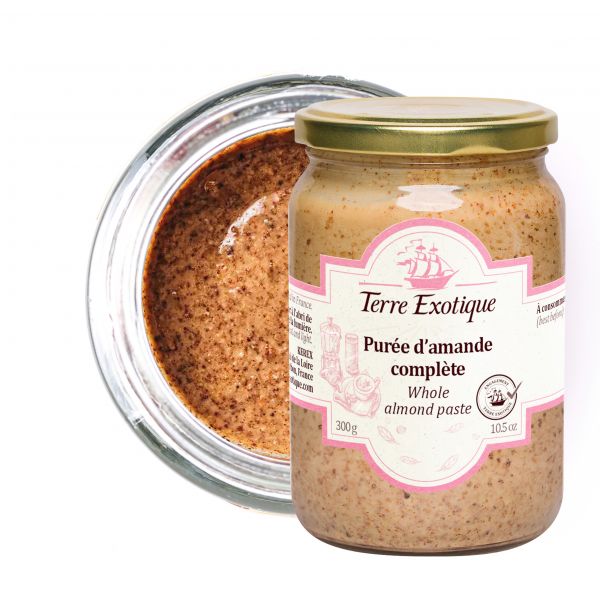



How to Use Almond Butter in Cooking?
From pesto to cake preparations, from sauces to salad dressings, almond butter easily finds its way into all your daily recipes, bringing flavor and texture.
A Few Recipe Ideas with Almond Butter
- Green Smoothie with Almond Butter: blend fresh spinach, a banana, almond butter, almond milk, and a teaspoon of honey until smooth for a nourishing and nutrient-rich smoothie.
- Almond Butter Salad Dressing: combine almond butter, lemon juice, olive oil, balsamic vinegar, crushed garlic, salt, and pepper. It's a healthy and flavorful alternative to traditional dressings.
- Almond and Basil Pesto Pasta: make a sauce by blending almond butter, fresh basil, garlic, Parmesan cheese, and a drizzle of olive oil. Serve with your favorite pasta for a quick and delicious dish.
- Almond Butter Cookies: prepare a dough with almond butter, flour, sugar, an egg, and baking powder. Form cookies and bake them in the oven. Perfect for a healthy and indulgent snack.
The Aromas of Almond Butter
Almond butter entices with its subtle and delicate aromas. It evokes sweet and slightly sugary notes, reminiscent of the freshness of raw almonds. Its fragrance is enhanced by a touch of roasted flavor, creating a perfect balance between natural sweetness and aromatic richness.
Almonds, a Delicious Kernel
The almond tree, or Prunus dulcis, is a fruit tree whose botanical origins lie in the Middle East and South Asia. This tree belongs to the Rosaceae family, the same as peaches and cherries, which is why the almond is technically the kernel of a stone fruit. The earliest almond tree cultivations date back thousands of years, with evidence of their consumption dating from 3000 to 2000 BCE. The almond tree has been widely cultivated and valued for its nutritious kernels, spreading throughout the Mediterranean basin and becoming an essential element of local agriculture and gastronomy.
A Brief History of Almond Butter
Almond butter has deep historical roots. Its use dates back to antiquity, especially in the kitchens of the Middle East and the Mediterranean. Almonds, cultivated for millennia in these regions, were ground to form a paste used in both sweet and savory dishes. The popularity of almond butter gradually spread to Europe, notably through trade and cultural exchanges. Today, it is appreciated worldwide, often used as a healthy alternative to traditional butter and in vegetarian and vegan diets for its high protein and nutrient content.
| Price/kg | 0 |
|---|---|
| Allergen | Fruits à coques / Nuts |
| Native country | FRANCE |
| Ingredients | 100% whole ALMOND (EU). |
| Possible traces of sesame, peanut and other nuts. | |
| Nutritional Info | VN Energie pour 100 g (energy for 100g) : 2544 kJ / 615 kcal VN Matière grasse (fat) : 51 g Dont acide gras saturés (of which saturated fat) : 4.1 g VN Glucides (carbohydrate) : 9.5 g Dont sucres (of which sugars) : 4.2 g VN Protéines (protein) : 22.6 g Vn Sel (salt) : 0.01 g |
| Contenance | 300g |
| TRACES EVENTUELLES D'ALLERGÈNES | céleri, sésame, moutarde, fruits à coques. |
 Français
Français 



